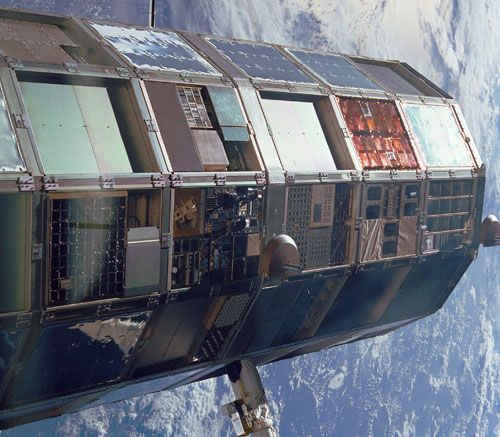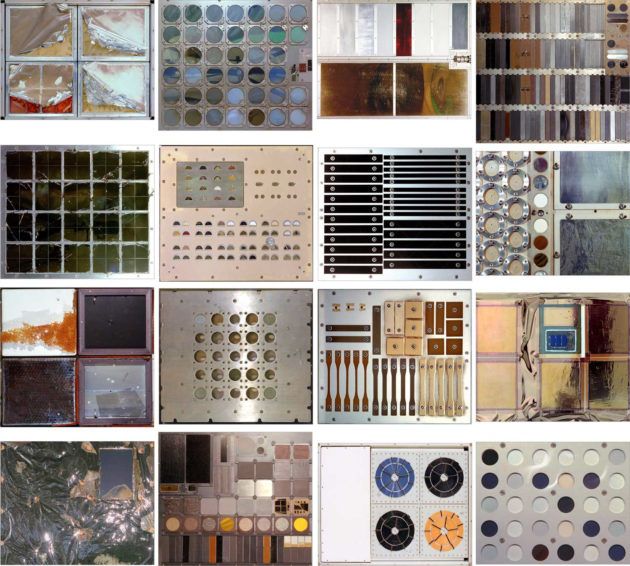It’s the 30th Anniversary of NASA’s Long Duration Exposure Facility, and It’s a Material Inspiration from Outer Space

Thirty years ago NASA put its Long Duration Exposure Facility (LDEF) into outer space. Conceived in 1970, the LDEF was deployed in 1984 by the space shuttle Challenger—a name that is, to the American consciousness, more reminiscent of disaster than success in scientific exploration. And it was disaster that left the LDEF in orbit for 2,078 days: Originally scheduled for within a year of its deployment, the experiment’s retrieval was postponed until 1986, and then again indefinitely when Challenger exploded, plummeting into the Florida sea. So it was that 57 internationally conceived experiments—in thermal systems and spacecraft propulsion; materials, coatings, electronics, and optics—came to inhabit space for 5.7 years, one half of a solar cycle. Thirty-two thousand, four hundred and twenty-two earth orbits later, the school bus-sized cylinder was returned to American soil and photographed, its experiments de-integrated and its panels documented, divided, and sent back to various primary investigators’ laboratories.
The beauty of the LDEF—more alienated now, perhaps, in its parcellation than it ever was in orbit—lies in its 23-year history’s very resistance to chronology. A canister of primary materials exposed to primal forces, its images project a stillness and color untraceable in time.

